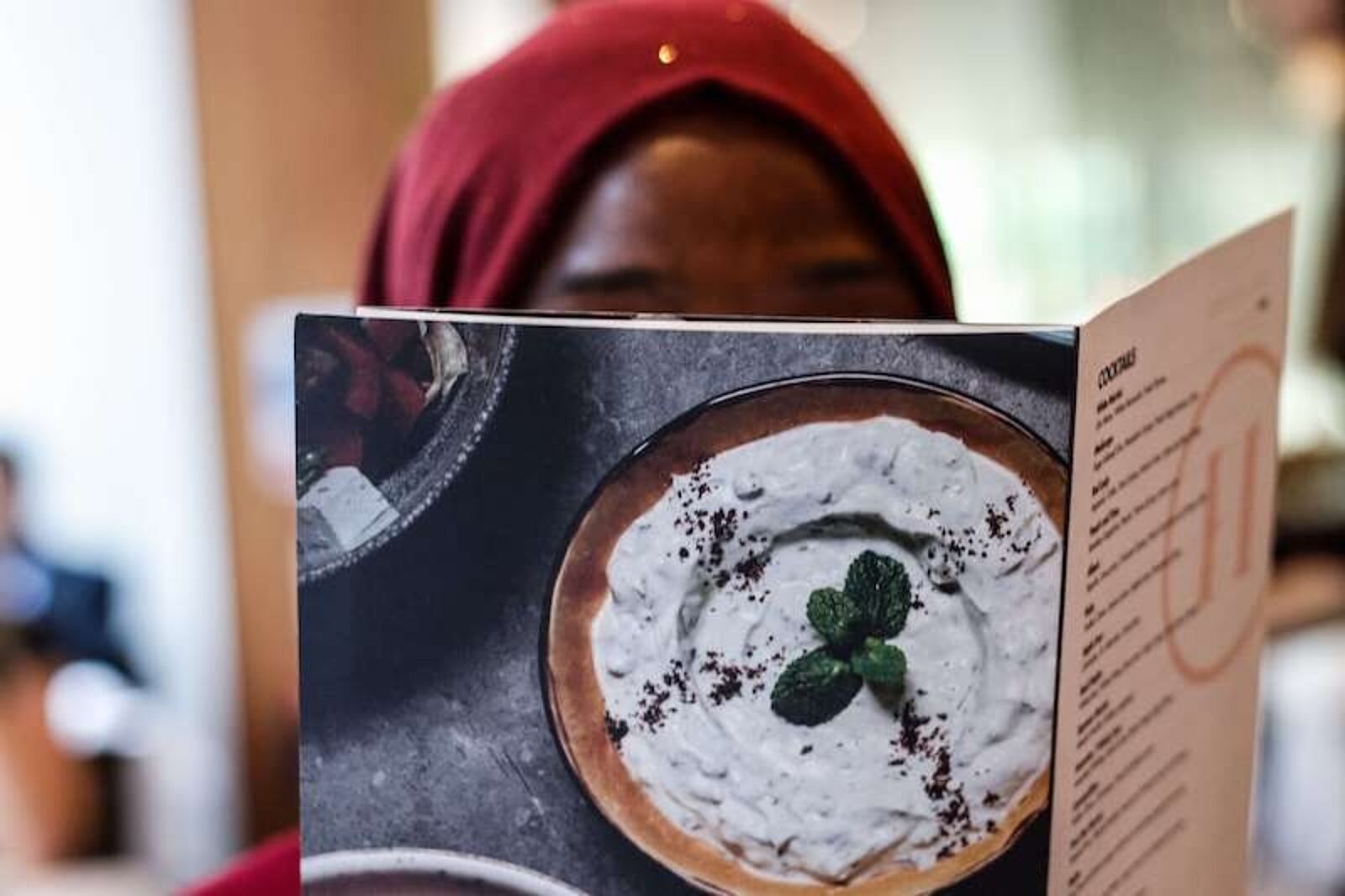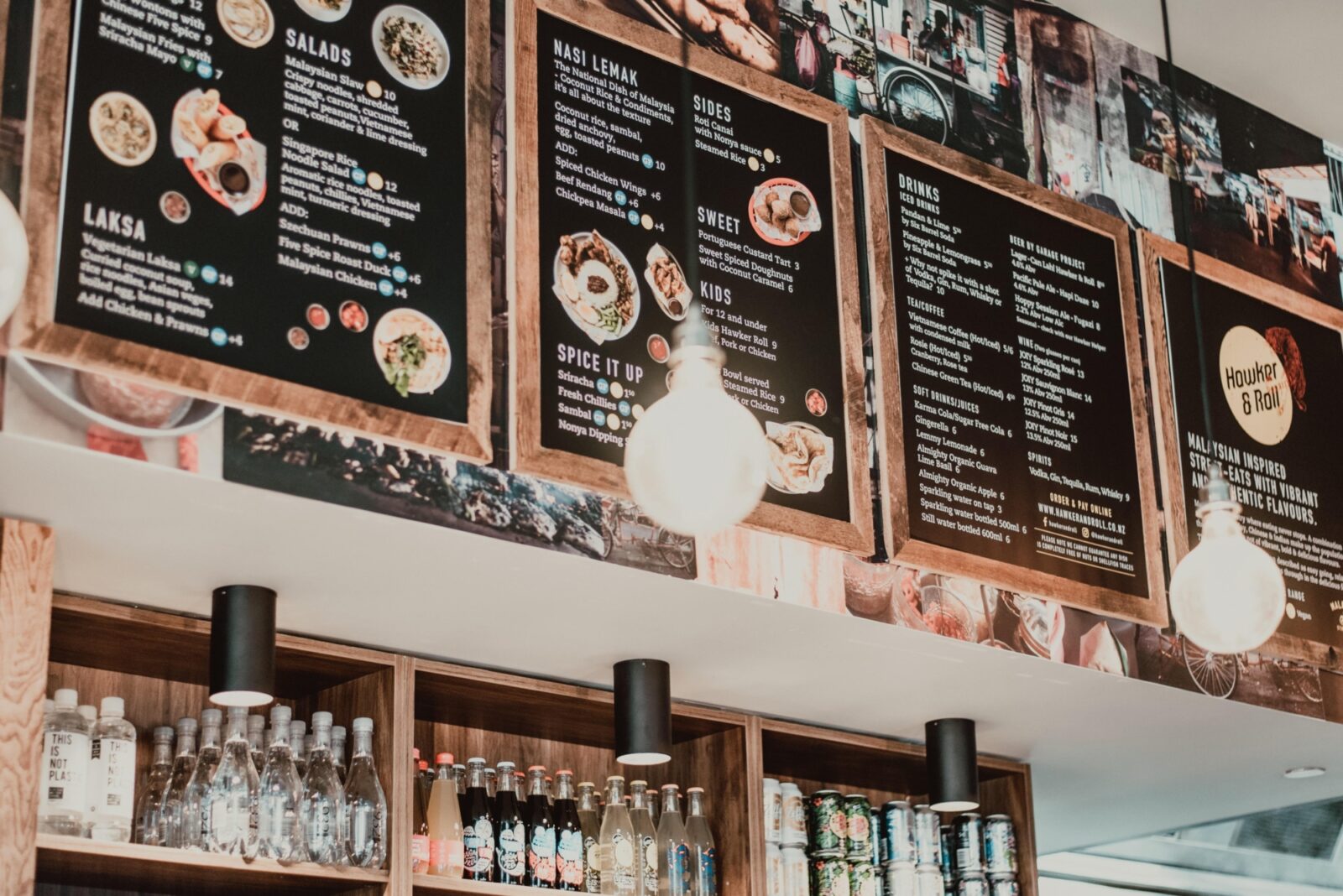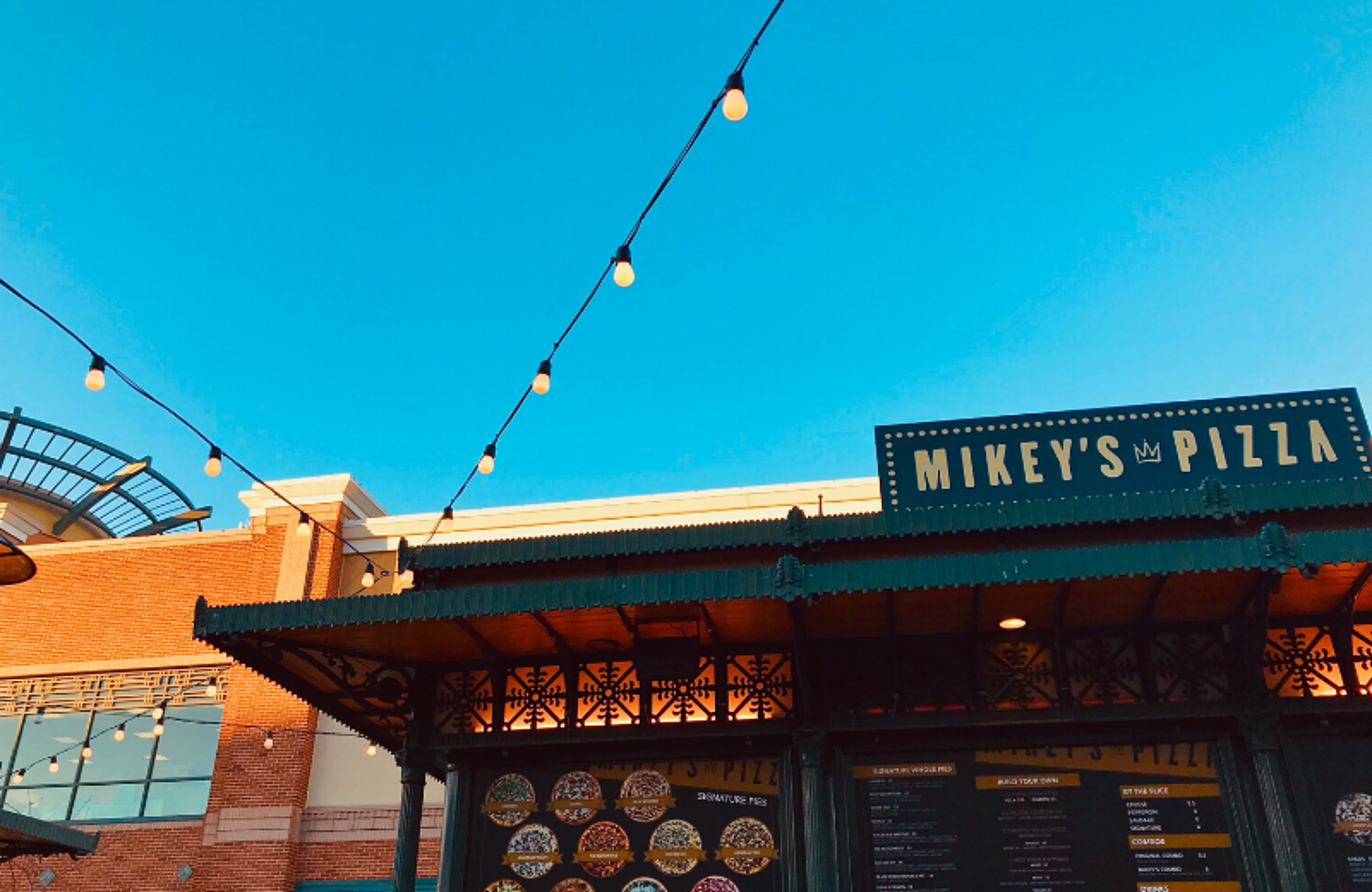
How to Come Up With New Restaurant Menu Ideas
Need inspiration for your restaurant menu board or a new menu? Here’s how to come up with creative menu ideas for your restaurant.

Katherine BoyarskyAuthor
Once you create your first restaurant menu, don’t breathe a sigh of relief just yet. Your menu should continuously be developing and improving in order for it keep up with competition and impress guests.
A good restaurant menu design will evolve along with the seasons and customer preferences all while staying true to the restaurant’s theme.
While some restaurants pride themselves on new menu offerings each week depending on the freshness of local produce. However, most restaurants introduce a seasonal menu with signature dishes to go along with it every once in a while.
Regardless of the food you serve, having only a few menu items to offer customers will quickly leave you in the dust compared to other restaurants that take the time to refresh their menus.
It’s essential for longterm success, but thinking of new restaurant menu ideas is easier said than done. It’s very risky when you don’t take the necessary precautions including listening to what guests want and tracking your most profitable menu items.
Finding out this information is done via a menu engineering analysis very quarter. Highlight the profitable menu items and use that information to influence the rest of your restaurant menu ideas.
Don’t just take our word for how important this is. 31% of restaurant owners say they update their menu on a monthly basus and 24% say they do it seasonally.
Uncover all you need to know about what makes your restaurant menu so important, what it should include, and how to create and successfully implement new menu designs that will boost sales for your restaurant business.
What to Include on Your Restaurant Menu
Every restaurant business naturally has a different menu from one another, which is great as it offers customers multiple locations to eat at depending on whether they want a brunch menu or ice cream that day.
When cooking up new restaurant menu ideas, be reminded of the following considerations at every stage of the design and planning process for the perfect menu:
Concise and enticing descriptions of each menu item.
Organized menu categories such as lunch, dinner, and dessert.
Logo and color palette that matches the restaurant’s branding.
Menu design has clear, legible font that is aligned with the restaurant’s theme.
Restaurant contact information including address, phone number, and social media channels especially if it’s an online menu.
Physical menus should be made from a durable material such as plastic, wood, or metal.
Menu categories for children.
A specialized section or a separate diet-based menu for allergens, intolerances, or other customer preferences.
Types of Menus Used in Restaurants
Restaurants may have different menus for various reasons. For example, a brunch menu is only supplied to guests during specific times, e.g., 11 am to 2 pm, and changes menu items weekly while the others are more consistent.
That’s right, gone are the days when just one menu was enough to stay in the game.
Nowadays, it’s more beneficial for your restaurant business as well as your customers to offer different menu types.
When choosing your menus, start the process by thinking about your ideal customer, who is your target market and what will they want in a menu?
To find this out, run surveys on social media or on the restaurant’s website to uncover what menu offerings guests want regarding length, dishes, and more.
At the end of the day, you can let your sales speak for themselves and tailor your restaurant menu by adding more of the most profitable menu items.
Here are examples of types of restaurant menus:
Static menu: Remains the same for the most part. When updated, it’s usually a full menu change.
Daily/Weekly menu: Changes daily or weekly depending on supplies or the chef’s choice.
Seasonal menu: Changes on a cycle like seasons or a set amount of time.
Diet-based menu: Designed for a given diet like a Gluten-free menu or a Vegetarian menu.
A la carte menu: Offers each item individually. Changes regularly.
Prix fixe menu: Offers multi-course meals for a fixed price, can be used as a promotional or seasonal menu option.
Now that you have the general concept for a menu and potential subtypes to cater to customer preferences and match your restaurant’s theme, it’s time to brainstorm fresh menu items.
Creating the Ideal Restaurant Menu in 5 Easy Steps
Whether you’re redesigning your restaurant menu completely or giving your current one a seasonal tune-up, coming up with meal ideas is a collaborative process.
No one runs a restaurant business completely on their own, throughout this process don’t shy away from tapping into culinary creativity in order to create a menu that not only stays true to your restaurant’s branding and vibe, but keeps guests coming back for more week after week.
1. Decide on a Menu Theme
A restaurant’s theme is important for setting apart from competitors, so it only makes sense that a menu should have one too.
The food truck revolution is a great example of successful menu engineering. The most successful food trucks all have one thing in common — Grilled Cheese Truck, Lobster Roll Truck, BBQ Truck, Fish Taco Truck — they all serve specialized menu items instead of a large variety.
With the use of a short and to the point menu that’s aligned with their branding and name, food truck customers know just what to expect as they grab a meal at a fixed price on the go.
You can learn the following from food trucks and their menu design:
Create catchy, themed names for signature dishes.
Develop a niche within your restaurant category.
Expand on your restaurant’s theme over time.
A clear menu theme is the easiest and most straightforward way to attract the right crowd. The first step in coming up with new restaurant menu ideas is to decide and stick to a theme.
Your restaurant’s theme will either pave the way for success or trap you in a restaurant business that just doesn't work, so take the time to settle on the right one. Think about your business plan, what you want to offer customers, and how you will be set apart from competitors.
For example, is your restaurant focused on an exclusive fine dining experience, or will it provide family-style dining options? This will influence your menu items, including appetizers, entrees, and desserts.
2. Always Look for Fresh Menu Inspiration
In the brainstorming phase of designing or updating your restaurant menu, it’s a good idea to surround yourself with inspiration all day, every day, everywhere you go.
Keeping an open mind when it comes to inspiration involves paying close attention to what's happening in the restaurant industry and how people are responding to it.
Other than using your day-to-day experiences, social media is a great tool for following food-related accounts to find inspiration and insights into how people react to meal ideas.
Here are some other ways to find inspiration for menu ideas:
Subscribe to consumer food and industry magazines.
Watch cooking and food travel shows on YouTube and/or TV.
Be aware of new restaurants, and check out their menu and reviews to see what is working and what isn’t.
Eat at new restaurants.
Travel to new places and try new ingredients or local dishes to expand your knowledge.
Use image-focused social media for restaurant menu templates to inspire the layout and design.
3. Create a Menu Formula
Now, with all these ideas and a theme that fits in with your restaurant’s branding, there needs to be a standard formula for your menu, otherwise it can snowball out of control.
To ensure a comprehensive menu design, ask yourself the following questions:
How many menu items do you have in total?
What are your menu categories?
Are there any dietary symbols that will require a key to help guests define them?
How many proteins do you want to inventory?
Will you serve specials and signature dishes?
Will you have different menus depending on meal times or a single menu?
There are much more factors to think about, but these bullet points will start you off on the right track. Once you have a general idea on your menu theme, you can begin the indepth menu design with a hired professional.
4. Include Special, Seasonal, and Promotional Menu Items
Begin with the standard plates or core menu offerings which will be the foundation for the rest of the selection. These are the meals that will remain consistent no matter the season.
There’s no concrete rule about how many standard plates you can include. It’s best to decide this during the discussion of the restaurant’s theme to ensure it aligns with the overall menu design strategy.
After you have carefully selected and added your favorite meal ideas, look at the remaining items needing to be assigned. Use what you have decided pertaining to the restaurant’s branding and theme to create a cohesive yet varied menu. You must also consider what ingredients you have available and the customer preferences of your target market, this will help predict what will be the most profitable menu items.
5. Edit, Combine, and Refine Your Menu
It’s impossible to create a perfect menu that has every item you want to include.
Try and be as flexible as possible so that you are adapting meal items to fit the menu instead of the other way round. Otherwise, you will be left with a messy, confusing menu that will give guests the impression that your restaurant business lacks focus and organization.
Establish a format for your menu, then edit, combine, and refine until it is the best portrayal of what you restaurant has to offer.
Editing the Menu
If you need a steak dish but also have an idea for a pork one, adapt the recipe to offer customers both options. For example, provide the dish with a choice of steak or pork.
Menu engineering comes into play here, too. If you’ve discovered a few menu items aren’t very popular, it might be time to remove them.
To learn more about this process on categorizing dishes on a matrix of profitability and popularity, check out our full-length free menu engineering course which is perfect for restaurant owners.
Combining Menu Items
Combining dishes from your extensive list of restaurant menu ideas will allow you to create more unique meal ideas that will prove popular in the dining room.
For example, if you need a braised dish and a pasta dish, consider combining both elements. This will help implement new flavors unique to your restaurant and offer multiple versions of your classic dish.
Refining the Menu
Once you have narrowed down your potential restaurant menu design and items, make sure it is refined. This step is essential for aligning the menu with the overall business theme and concept.
Go through your menu once again, trimming the fat and narrowing down the contents until it has been polished into the perfect menu. It must also come across this way no matter how it’s accessed, whether it be an online menu via the restaurant website, on the social media page, or a printed menu in the dining room.
When refining a restaurant menu, ask yourself:
Is this menu item popular?
Are these two menu items too similar to one another?
How does this menu item fit in with our regular customers’ preferences?
If we removed this dish, would our restaurant guests be upset?
How valuable is this menu item to our profits?
A seasonal menu or one with signature dishes are a great example of how to attract new customers, upselling existing guests, and testing the limits of your culinary creativity. However, make sure to review your restaurant menu regularly and keep it updated.
Menu Engineering Worksheet
Use this menu engineering worksheet, complete with intricate menu engineering formulas, to determine areas of strength and weakness in your restaurant's menu.

Menu Pricing Strategies
Now that you have a bulletproof restaurant menu design with fresh meal ideas, it’s time to think about food costs. Not only does pricing your menu items accurately boost sales, but also influences how popular they will be with customers.
When pricing your menu, keep these tips in mind:
Find your most profitable menu items during different seasons and price accordingly.
Promote dishes with ingredients in season, rather than paying more for out of season items and risking the dish not being popular.
Carry out market research and show value beyond the price itself.
Test out menu prices by asking guests and staff for feedback on which items are doing the best and how to make them more valuable.
Summarizing the Perfect Restaurant Menu
The format of your menu from dish selection to design to pricing can and should be flexible, amendable, and capable of evolving alongside your restaurant business, after all you have to keep up with what customers want while remaining two steps ahead of competitors.
If you get too carried away with your restaurant menu ideas, it will do more harm than good. Be realistic with yourself and use menu engineering to ensure you only include strong menu items.
Menu format should not compromise the focus. Instead, craft a menu that remains true to your restaurant’s theme and excites guests to come back time and time again.
To get started creating the perfect menu for your restaurant, here’s How to Make Your Menu a Money-Maker Using Restaurant Menu Engineering.
FAQs
What should be on a restaurant menu?
Ultimately, what should be on your restaurant menu depends on multiple factors. First and foremost, it must align with your restaurant’s branding and theme.
The meal ideas should also be high-quality and on par with what your target market wants. As well as featuring standard plates, it’s important to create your own unique dishes or spins on classic ones to stand out and generate loyal customers.
Be transparent when pricing menu items and ensure they cover food costs while making a profit and being affordable to allow for a bigger market.
Also, consider creating a brunch menu and/or a seasonal menu, each with its own signature dishes.
How to make a unique menu?
A unique menu will feature fresh meals inspired by numerous things. Traveling to multiple locations, following respected chefs on social media, and eating out at new restaurants will improve your culinary creativity and allow for unique ideas to flow.
Along with distinctive menu items, the design, theme, and layout play a big part in creating a unique menu. Think about including different menu categories and offer customers a diet-based menu with a straightforward key.
What are the 5 most common types of menus?
These are the 5 most common types of menus:
A la carte menu: Each item is listed and priced separately, offering diners more flexibility in what they order.
Static menu: Typically the largest menu in the restaurant business and doesn’t change.
Du jour menus: Menu items vary depending on what is available that particular day.
Cycle menus: A list of food and drinks that are repeated through a cycle during a time period, such as every day, week, or month.
Fixed menus: Items are listed at a fixed price and usually offer a full meal at a set rate.
Menu Engineering Course
Take this course to make the most of your menu. Learn about menu psychology and design, managing your menu online, and adapting your menu to increase sales.

Is this article helpful?
DISCLAIMER: This information is provided for general informational purposes only, and publication does not constitute an endorsement. Toast does not warrant the accuracy or completeness of any information, text, graphics, links, or other items contained within this content. Toast does not guarantee you will achieve any specific results if you follow any advice herein. It may be advisable for you to consult with a professional such as a lawyer, accountant, or business advisor for advice specific to your situation.
Read More
Subscribe to On the Line
Sign up to get industry intel, advice, tools, and honest takes from real people tackling their restaurants’ greatest challenges.


